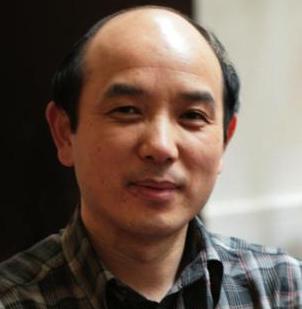The world today features a globalized economy, multi-polar politics, extensive application of IT in societies, diversified threats and pluralistic cultures. These five features interact and create many reverberations. In this new world order, the relationship between the US and China is evolving from one between the sole superpower and one of several major powers to one between the ‘eldest’ and ‘second brother’. The US used to be a world policeman and now its center of gravity is moving back to the Asia Pacific. China used to focus on economic development and now is developing major-power diplomacy with a keener awareness for strategic extension and proactive management. The two countries now directly face each other in the Asia Pacific in almost all areas — a new situation not seen in the past hundred years. Additionally, new issues such as cyber, outer space, polar region development and climate have been emerging. All these require new frameworks and new thinking to guide China-US relations, otherwise the two countries may well lose control inadvertently. Donald Trump’s taking office will happen at this critical moment of major changes in China-US relations.
Admittedly, America’s existing China strategy has its inherent structure, laws and characteristics and will not be fundamentally overthrown with Trump’s election as the next US president. Unlike many other sets of relationships, China-US relations is the most complex bilateral tie in today’s world. Between the two countries, there are both a host of conflicts in geopolitics, ideology and civilization and as well as extensive and profound cooperation in economy, trade, regional security and global governance, on the basis of which a deep mutual dependence has developed. Turning that completely upside-down is quite unlikely. On the other hand, with years of exchanges, the American view about China has become more and more mature. Such basic patterns have emerged in bilateral relations since their normalization. Nonetheless, the outside world is fairly worried about Trump. The worry is not completely unfounded.
First, the China-US relationship is now in a new stage of development. Those basic frameworks that guided this relationship have become less effective. The six political documents (three Joint Communiqués and three Joint Statements) that powered successful operation of China-US relations for about four decades are no longer sufficient. This is because major changes have taken place in the two countries’ balance of power, strategic posture, strategic environment and strategic basis. It is therefore necessary to follow the trend and readjust the existing frameworks of China-US relations. China has proposed to develop a new model of major-country relations, to which the US has not given in-depth thinking or response. Meanwhile the US has not been able to propose a framework that is abreast of the times. When Trump is in office, many will observe whether his administration will have any new thinking or new framework and whether there will be some disruptive strategic shifts. That will be the focus of attention.
Second, Trump and his team are not very familiar to many people. Although he has claimed that he’s been to China many times and that he understood China and Chinese, governing a country is rather different from doing business. What his team (especially his China team) will be like is still unknown and yet to be observed. Kissinger described Trump as the most unique American leader in his lifetime; he advised that the next U.S. Ambassador to China should be someone who not only understands current Chinese politics but also its history and culture to handle affairs related to China, which is indeed a very wise piece of advice to Trump that could forestall problems in the future.
Third, Trump expressed views rather unfavorable towards China during his campaign.
What concept or policy will Trump invent for China? This is the starting point of our thinking on the future development of China-US relations. Historically, almost every step of evolution in America’s China strategy has been first of all the result of China’s new strength, second based on changes in China’s strategy including its intentions and political directions, and third attributable to changing national strength of the US and a changing international environment.
Against the background of Trump’s election, on the one hand, the gap between Chinese and American strengths continues narrowing, with China gaining markedly higher international influence. On the other hand, the American strategic community feels increasingly unsure about China’s political direction and strategic intentions. As such, the US has developed a sense of anxiety and urgency, with stronger voices emerging for showing (and using) strength with regard to China. The problem is, the US is confronted with many problems at home and the evolving international structure is not supportive of American status. Trump has to take this basic fact into account and draft his China strategy with more pragmatic, rational, inclusive and even creative thinking. Given China’s strength, it’s rather impossible for the US to comprehensively “contain China”. In the future, it will have to continue finding a certain strategic balance.
Chinese diplomacy towards the US has also become more and more mature in recent years. Beijing has gradually learned to engage the US rather than waiting for the latter to act. Chinese leaders lost no time to congratulate and talk with Trump. Xi Jinping and Trump had an initial conversation and agreed to respect each other, identifying the direction for bilateral relations in the next stage. During the APEC meetings in Lima, Presidents Xi and Obama comprehensively summed up the development of the China-US relationship, which has on the whole been in good order during the political transition in the US.

